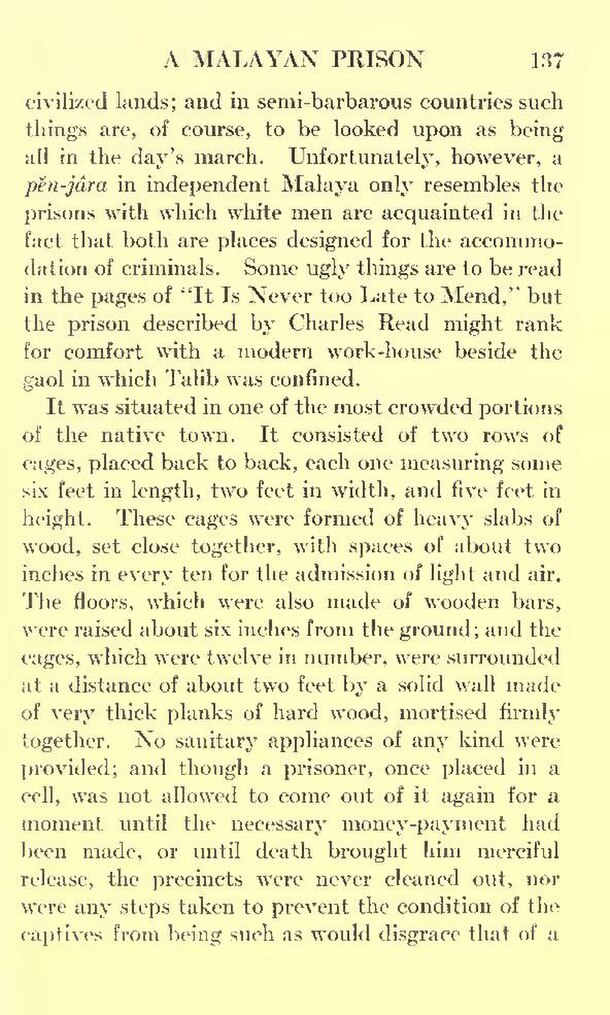civilized lands; and in semi-barbarous countries such things are, of course, to be looked upon as being all in the day's march. Unfortunately, however, a pěn-jâra in independent Malaya only resembles the prisons with which white men are acquainted in the fact that both are places designed for the accommodation of criminals. Some ugly things are to be read in the pages of "It Is Never too Late to Mend," but the prison described by Charles Read might rank for comfort with a modern work-house beside the gaol in which Talib was confined.
It was situated in one of the most crowded portions of the native town. It consisted of two rows of cages, placed back to back, each one measuring some six feet in length, two feet in width, and five feet in height. These cages were formed of heavy slabs of wood, set close together, with spaces of about two inches in every ten for the admission of light and air. The floors, which were also made of wooden bars, were raised about six inches from the ground; and the cages, which were twelve in number, were surrounded at a distance of about two feet by a solid wall made of very thick planks of hard wood, mortised firmly together. No sanitary appliances of any kind were provided; and though a prisoner, once placed in a cell, was not allowed to come out of it again for a moment until the necessary money-payment had been made, or until death brought him merciful release, the precincts were never cleaned out, nor were any steps taken to prevent the condition of the captives from being such as would disgrace that of a
